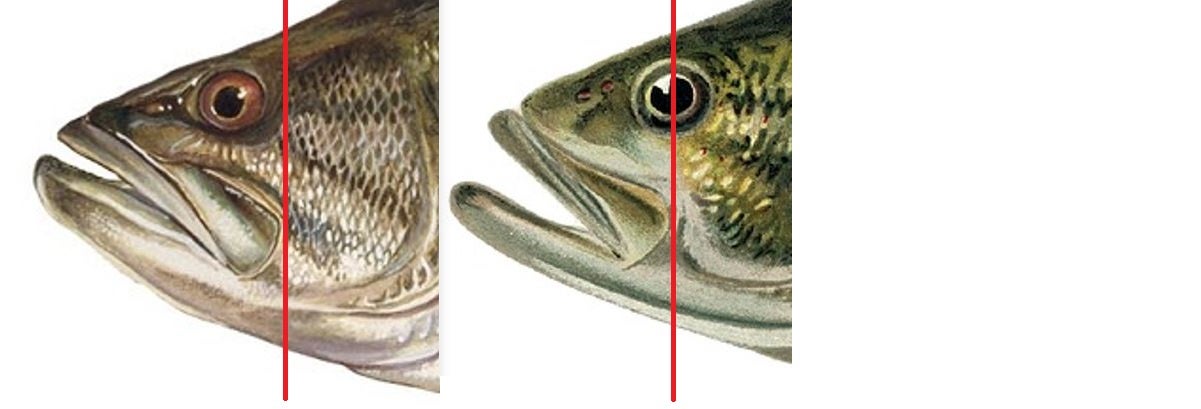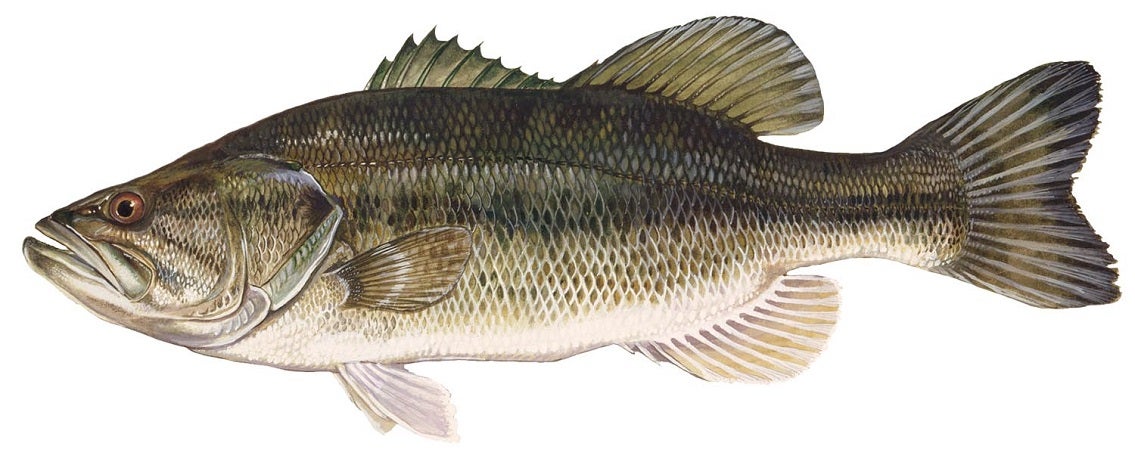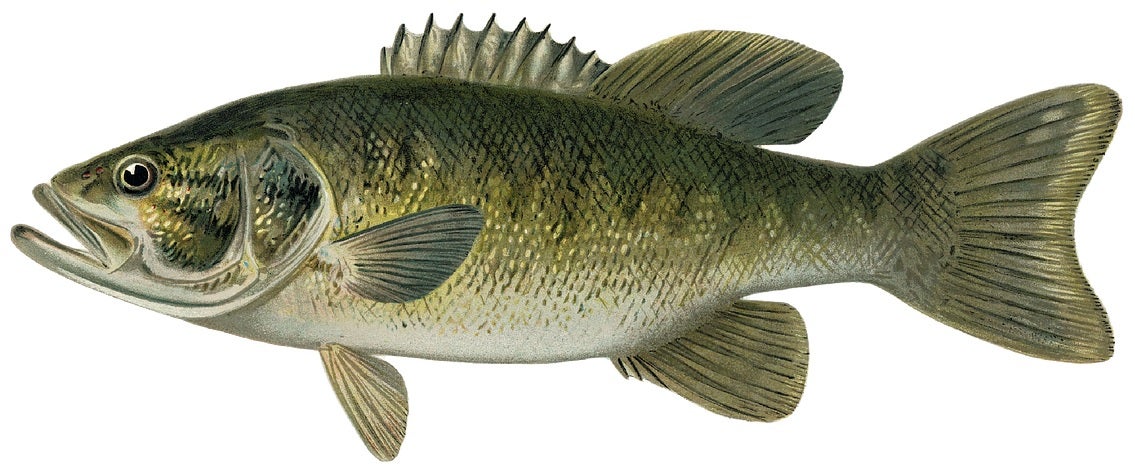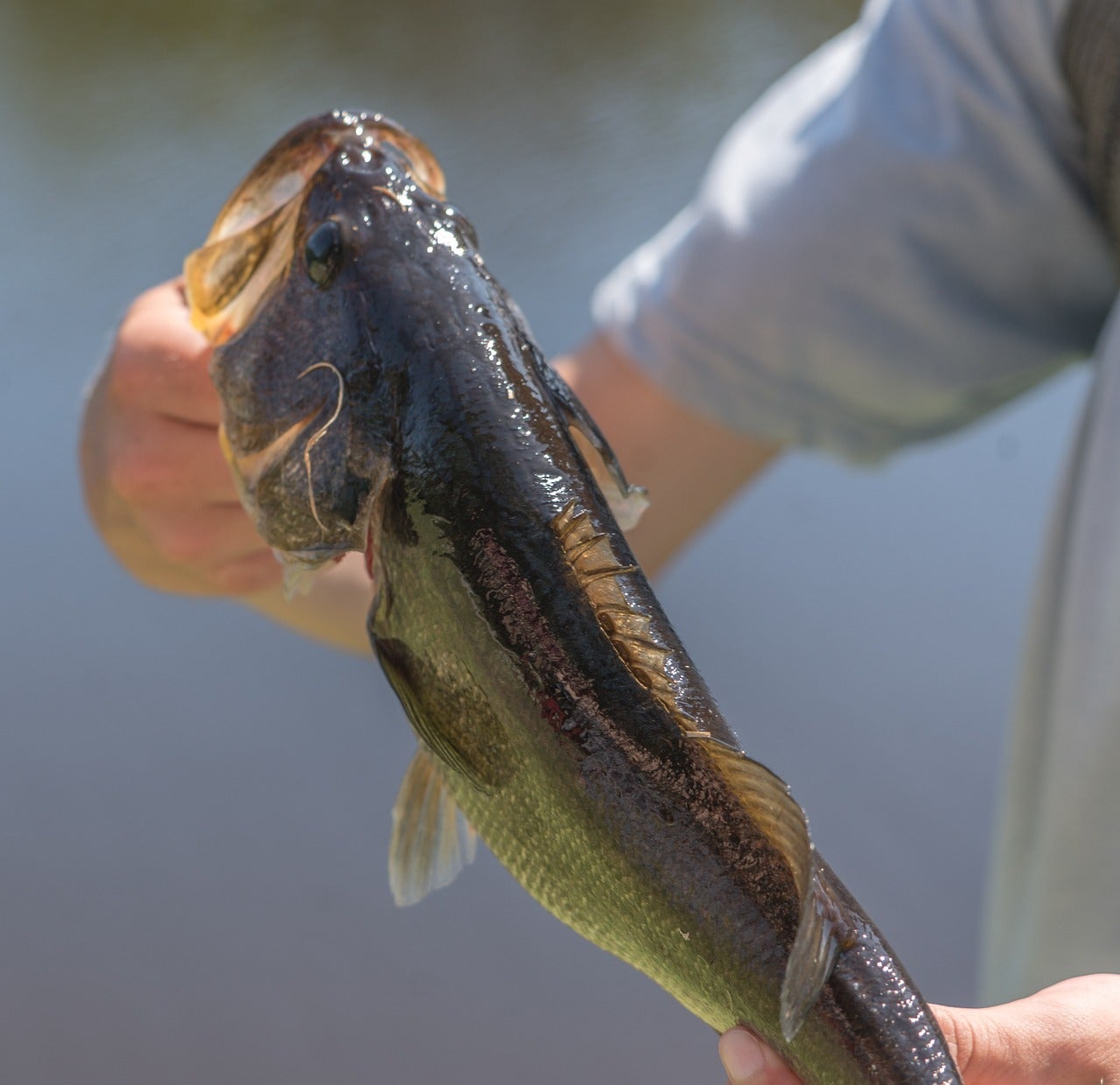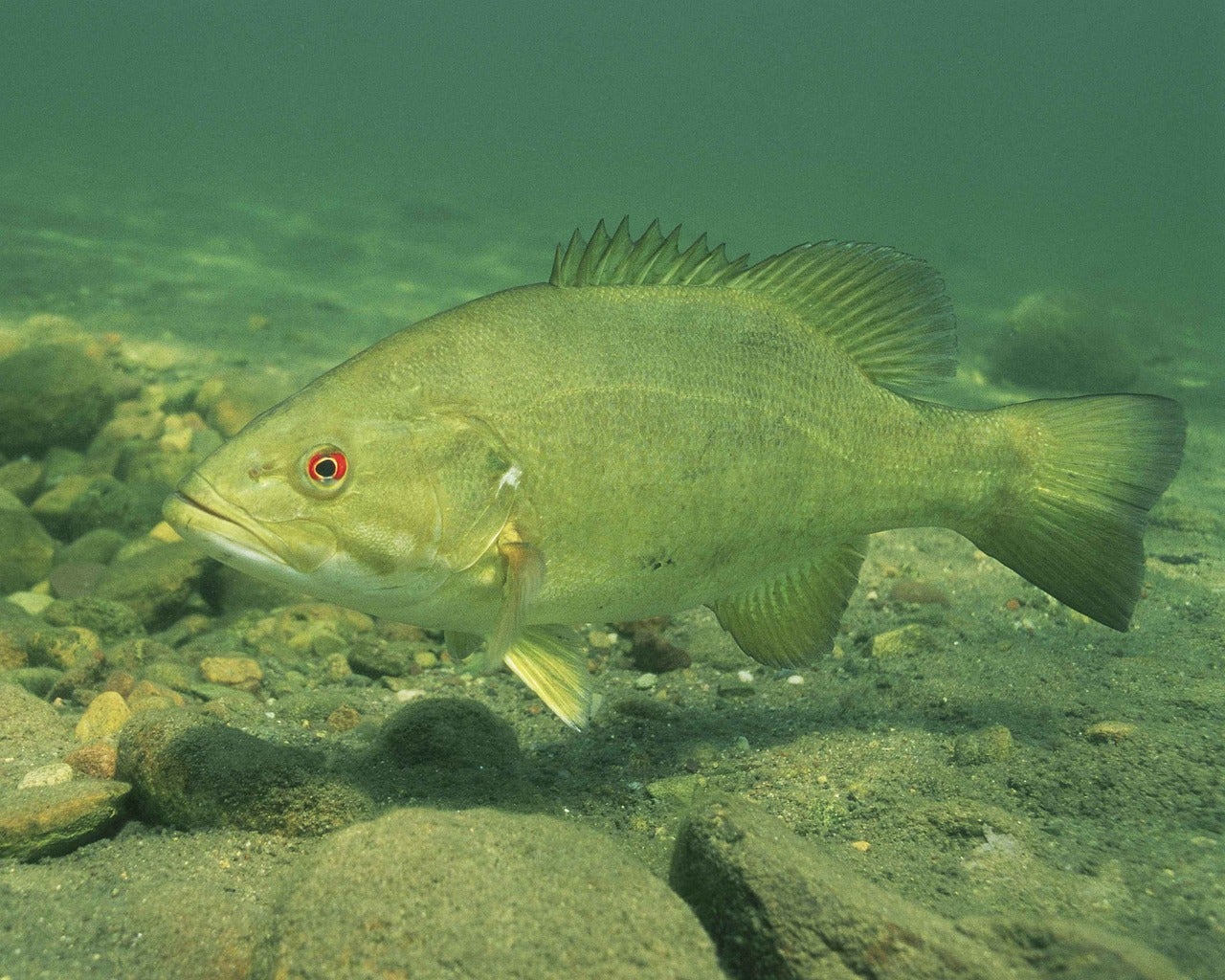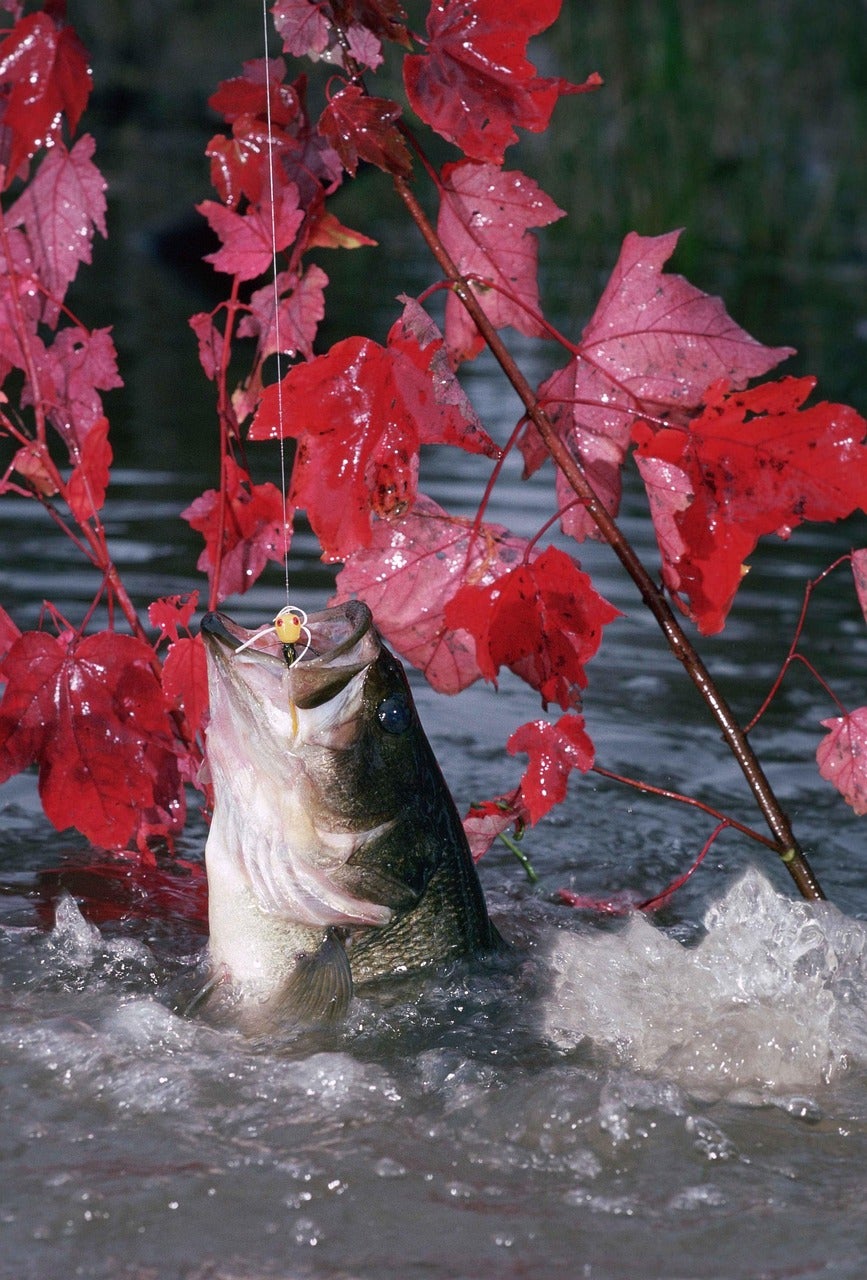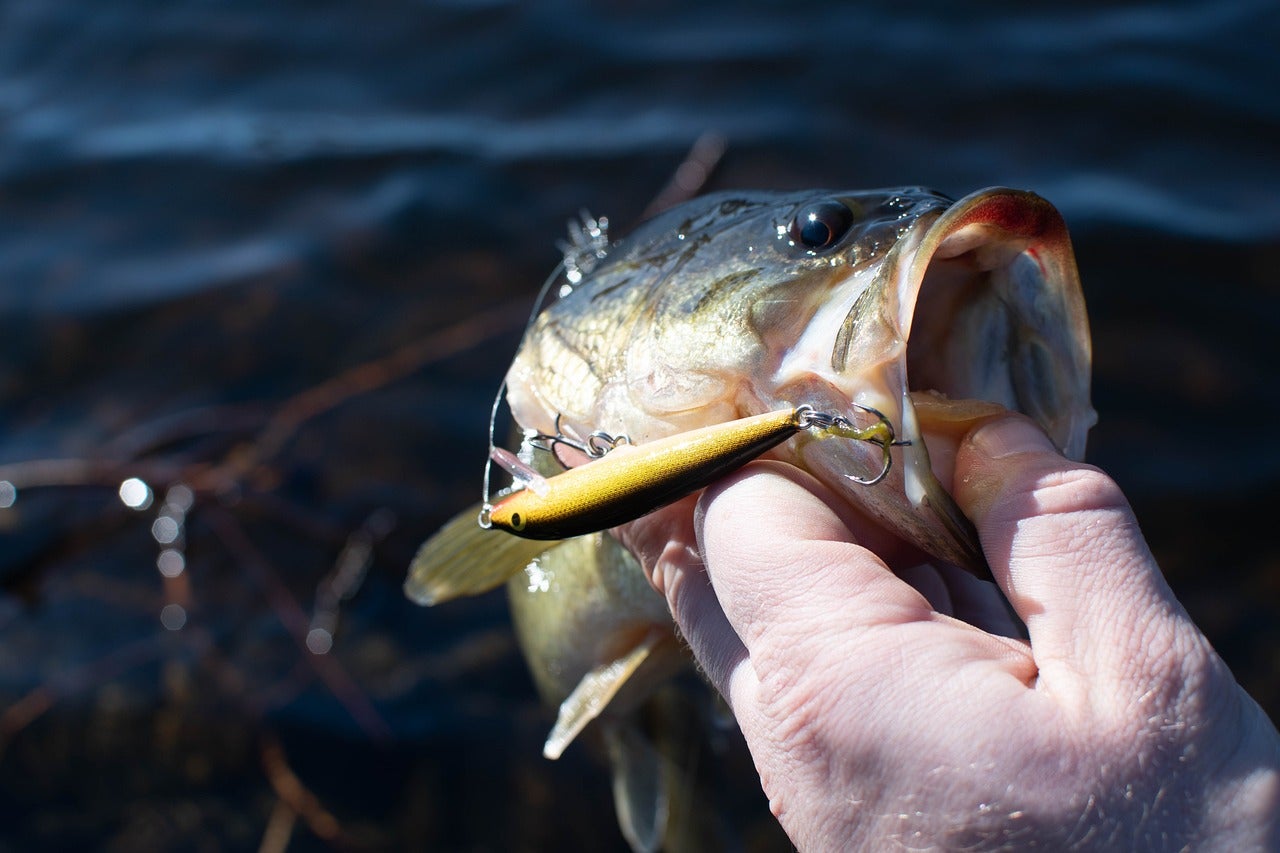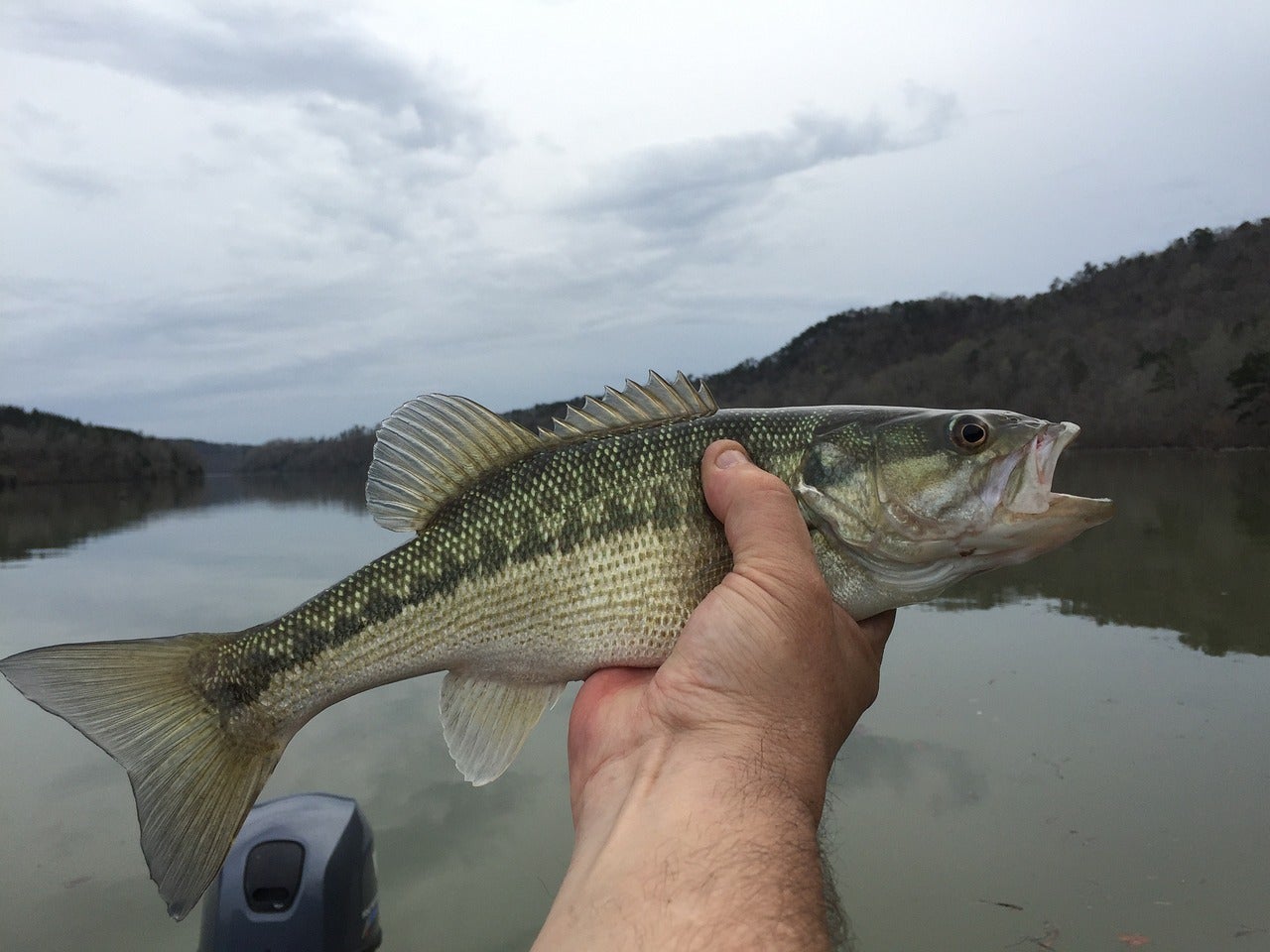Do You Know your Fish?! Smallmouth Bass vs. Largemouth Bass
Travis Olander 02.02.23
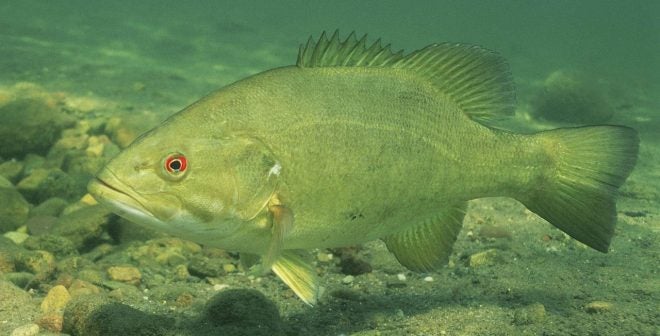
Bass fishing is a helluva lot of fun. They’re aggressive, they put up a good fight, and they’re attracted to plenty of different bait and lures. But, new anglers – or even experienced anglers new to bass fishing – can easily mix up the differences between smallmouth and largemouth bass. Let’s compare these two game fish, talk the differences and similarities, and go over tips and tricks for making your bass hunt a successful one.
How to Tell Largemouth vs. Smallmouth Bass
Smallies and Largies (as they’re affectionately referred to) often share the same waterways and, unless you’re lucky enough to find mature fish, both species can appear quite similar when it comes to length and weight. But there are telltale differences between the two species.
Mouth Size
As the names imply, Smallmouth Bass have smaller jaws than Largemouth Bass. The jawline on a Smallie typically ends just before or directly underneath the eye. On Largies, the jawline extends well past the eye.
Dorsal Fin
Largemouth Bass have a distinct gap or notch in the dorsal fin, separating the front spiny segment from the swept, feathery rear. Smallmouth Bass have a less distinct gap in the same location, although the rear of its dorsal is nearly identical to that of the Largie.
Colors, Spots & Stripes
Largemouth Bass are also called Green Bass or Black Bass because of their green hues and dark, often black splotches and spots. These markings form a horizontal band along the side of their bodies.
Smallmouth Bass can also have green hues, but more often they’re brown or bronze. This is why they’re often called — you guessed it — Brown Bass or Bronzebacks. A better distinction is found in the Smallie’s pattern: It has vertical stripes along the side of its body, which form dark bands.
Size & Weight
At maturity, Largemouth Bass grow as long as 30″ and can weight up to 20 pounds (the current world record stands at 22 pounds), but the average is 12 pounds. Smallmouth tend to max out at about 20″ and average between 3 and 6 pounds, but large trophies can reach 10 pounds. The Smallie world record stands at just shy of 12 pounds.
Smallmouth Bass vs Largemouth Diet
Both fish are carnivorous hunters, but Largemouth take full advantage of their anatomy: They can consume prey up to 50% of their own size. The Largie’s diet is varied, too. It eats everything from small baitfish like Bluegill and Panfish, to snails, crays, frogs, snakes, salamanders, and in rare cases, even juvenile birds who are unfortunate enough to paddle into their territory. Smallmouth Bass consume small baitfish, too, but they’re size dictates a diet that focuses more on crays and insects.
Smallmouth Bass vs. Largemouth Habitat
Largemouth Bass are more plentiful in various waters. Largies can adapt well to changing temperatures. In fact, the species can be found in bodies of water as far south as Florida, and as far north as Oregon or Maine. But, as a cold-blooded animal, Largemouth thrive more in temperate waters. Largemouth Bass enjoy murky or turbid water that flows slowly, with generally little current. They like hanging out near heavy vegetation, under tree shade, and amongst rocks and wood. These spots provide ample coverage and concealment for stalking and striking prey.
Smallmouth Bass are pickier with their locales. They prefer cooler, clearer waters that move faster. That means they generally prefer light cover and more open water to swim freely. Of course, like all fish, they’ll run for cover — vegetation, docks and piers, or rocky outcrops — when they feel threatened.
When to Fish Smallies vs. Largies
When it’s summertime and the sun shines, Largemouth Bass roam aplenty. They’re most active during the hot months and are easier to hunt in southern waters. On windy days, you’re more likely to find Largies under heavy cover, where currents are calmer. Since Smallies like moderate temperatures, they’re easier to find in northern waters. They provide the best action in spring, when bugs are spawning, and in autumn as the average temperature cools off.
How to Fish Largemouth Bass
1. Crankbaits, Swimbaits, and Jigs are your friend.
Largemouth love wounded prey. The jittery, frantic action of a jigged worm or dipping n’ diving crankbait is irresistible. When you spy a good Bass zone, cast past it and work laterally and vertically by reeling through the target area.
2. Stick to ledges, docks, rocks, and vegetation.
Shallow and dirty works best. Largemouth tend to avoid crystal clear, open water. Any location that provides hiding spots is a good bet. Hunting Largies from shore is both convenient and productive.
3. Don’t waste your time when it’s cold.
Largies get lethargic in cooler waters, so slow down your jig and reel if the temperatures are a bit brisk. If you’re near the end of summer or hitting the water in early spring, you’re going to have a hard time encouraging bites and strikes.
How to Fish Smallmouth Bass
1. Use light line and small or topwater lures.
Smallies prefer clear water, so flurocarbon is going to be your friend. You’re likely to spook the fish with flashy mono or copolymer. Dragging a noisy buzzbait or splashy spinner through their territory is bound to provoke their interest.
2. Hunt from April to July (spawning season).
Just about any jig or lure will get the job done when Smallmouth Bass are spawning. They’re wildly aggressive during mid to late spring, and will attack anything that enters their territory.
3. Clear, rocky bottoms work best.
Smallmouth make home among rock piles and stumps, and they like to prowl along sandy bottoms with light vegetation. Smallies don’t like pollution and murk, so avoid turbid water.
Learn From a Pro
Bass fishing is an art form, which is why it’s so popular. Check out the time we spent with Kevin VanDam, a pro Bass angler, and learn some extra tips and tricks to make your hunt successful.
